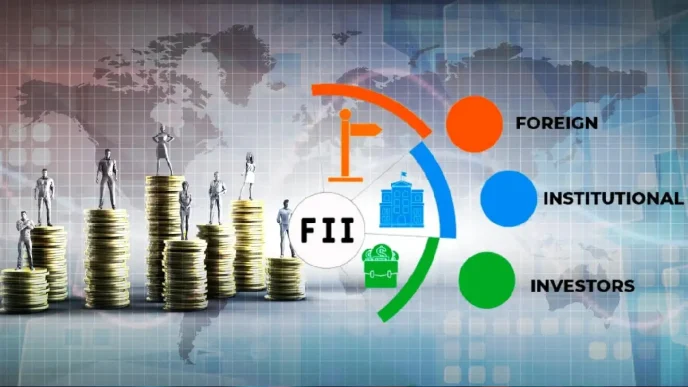Across Southeast Asia, universities are stepping out of the shadows of their Western counterparts, positioning themselves as formidable players in the global education arena. In Thailand and Malaysia, institutions like Chulalƒongkorn University and Universiti Malaya are not only climbing international rankings but also redefining their appeal through innovative programs and strategic partnerships. This surge reflects a broader regional ambition to become a hub for international students, driven by affordability, cultural richness, and increasingly competitive academic offerings.
A New Era for Southeast Asian Education
In the bustling heart of Bangkok, Chulalongkorn University, Thailand’s oldest higher education institution, is witnessing a transformation. With over 41,000 students across its programs, the university now hosts around 3,200 international students—a number that continues to grow. This shift mirrors a wider trend in Southeast Asia, where universities are racing to attract foreign talent and enhance their global standing. The competition is fierce, as institutions across the region grapple with the challenge of drawing students in an increasingly crowded market.
Chulalongkorn is not resting on its laurels, despite being ranked Thailand’s top university for academic reputation for 14 consecutive years by the QS World University Rankings. The university has introduced initiatives like the 3+1 academic program at its Faculty of Law, where undergraduate students spend three years in Bangkok and a final year abroad, earning dual degrees from two institutions. Such programs are designed to boost mobility among students and staff, enhancing the university’s international appeal.
Across the border in Malaysia, Universiti Malaya, the country’s oldest university, shares similar aspirations. Ranked in the global Top 60 in the 2021 QS World University Rankings, it has made significant strides since first entering the global rankings at 167th in 2014. The university is pushing for greater internationalization, with plans to ensure that every undergraduate travels abroad at least once before graduation, supported by financial assistance. This ambition is part of a broader vision to deepen ties with regional institutions like Chulalongkorn through staff and student exchanges.
Regional Ambition Meets Global Recognition
For decades, global education was synonymous with Western institutions, but Southeast Asia is rapidly changing that narrative. Countries like Thailand and Malaysia are emerging as attractive destinations due to their affordability, safety, and cultural diversity. In 2024, the Times Higher Education Asia University Rankings recognized 19 Thai universities, with eight improving their positions. Chulalongkorn secured 117th place in Asia, followed by Mahidol University at 139th and King Mongkut’s University of Technology Thonburi at 192nd.
Malaysia, too, has seen remarkable progress. Universiti Malaya’s ascent into the global Top 100 in 2019, and later the Top 60 in 2021, underscores the region’s growing academic clout. Other Malaysian institutions, such as Universiti Teknologi PETRONAS and Curtin University Malaysia, are forging partnerships with international tech companies and universities to boost research and student exchange opportunities. These collaborations are part of a strategic effort to align with global ranking criteria, focusing on research output and international visibility.
English-taught programs are a key draw for students from countries like China, India, the Middle East, and Africa. Many universities in the region have established dedicated international offices to support recruitment and partnerships. Some Thai institutions are even forming alliances with Chinese entities to attract more students from China, capitalizing on linguistic and cultural connections. Meanwhile, countries like Singapore, Malaysia, and the Philippines benefit from the widespread use of English, which facilitates academic success and language immersion for international students.
Student and Staff Mobility as a Cornerstone
At Universiti Putra Malaysia (UPM), ranked 148th in the 2025 QS World University Rankings (up from 158th in 2024), mobility is seen as a benchmark for academic and institutional quality. In 2024, UPM welcomed over 3,200 inbound students from more than 20 countries while sending 1,900 of its own students abroad for exchanges, internships, research, and conferences. This two-way flow is designed to cultivate globally minded graduates who serve as ambassadors for both the university and Malaysia.
UPM’s student-led model encourages leadership and independence, with students organizing programs, forming committees, and securing external funding. This approach has resulted in high participation rates, reflecting a strong commitment to internationalization. Intra-ASEAN student flows are particularly robust, with students from Indonesia, Vietnam, and Thailand often choosing to study in countries with stronger university systems like Singapore and Malaysia, where English and Mandarin are widely spoken.
Chulalongkorn University, meanwhile, is focusing on retaining top academic staff by encouraging them to publish at least two research papers annually. This emphasis on academic output aims to bolster the university’s reputation through citations and international recognition. The institution is also recruiting Thai lecturers with overseas teaching experience and seeking to attract global talent, partly through government incentives similar to those offered in the Eastern Economic Corridor for industries like aerospace.
Public Policies and Long-Term Strategies
Governments across Southeast Asia are playing a pivotal role in transforming their countries into education hubs. Malaysia’s Education Blueprint (2015–2025) promotes transnational education through branch campuses and emphasizes English-medium instruction to attract international students. Singapore, with its early 2000s initiative to become a leading education hub, continues to draw global talent despite a later shift in focus toward local needs and quality control.
Attracting international students is not just about boosting university rankings; it’s also about drawing talent to the region. Many students who complete their studies in Malaysia, for instance, pursue postgraduate education or employment there as expatriates. The country’s multicultural lifestyle, English-speaking environment, and modern infrastructure in cities like Kuala Lumpur and Selangor make it an appealing destination for long-term stays.
Thailand, too, is leveraging its cultural and economic strengths to position itself as a regional education leader. Events like Chulalongkorn University’s talk in July 2024 featuring a world-renowned AI expert highlight the institution’s commitment to maintaining a reputation for academic excellence. While rankings remain a tool for improvement, the ultimate goal is to enhance institutional quality and global competitiveness.
Challenges and Opportunities Ahead
Despite the progress, challenges persist. The competition for international students is intensifying, not just within Southeast Asia but globally. Universities must balance the drive for rankings with the need to maintain academic integrity and meet local demands. For institutions like Chulalongkorn and Universiti Malaya, this means continuously innovating—whether through dual-degree programs, research partnerships, or hosting high-profile academic figures.
Moreover, government support is crucial. Policies that facilitate the recruitment of international faculty and students, such as visa incentives or funding for research, can make a significant difference. Thailand’s Eastern Economic Corridor model, which has successfully attracted industry experts, could serve as a blueprint for academia. Similarly, Malaysia’s open attitude toward foreigners and emphasis on English instruction positions it well to retain talent post-graduation.
The rise of Southeast Asian universities also reflects a shift in global perceptions. No longer seen as secondary players, countries like Thailand and Malaysia are proving that they can offer world-class education at a fraction of the cost of Western institutions. This affordability, combined with cultural immersion and academic rigor, is drawing students from across the globe.
As these universities continue to climb the rankings and expand their international footprints, the question remains: can Southeast Asia sustain this momentum to become a dominant force in global education? The answer lies in their ability to adapt, innovate, and collaborate on a scale that matches their ambition.













